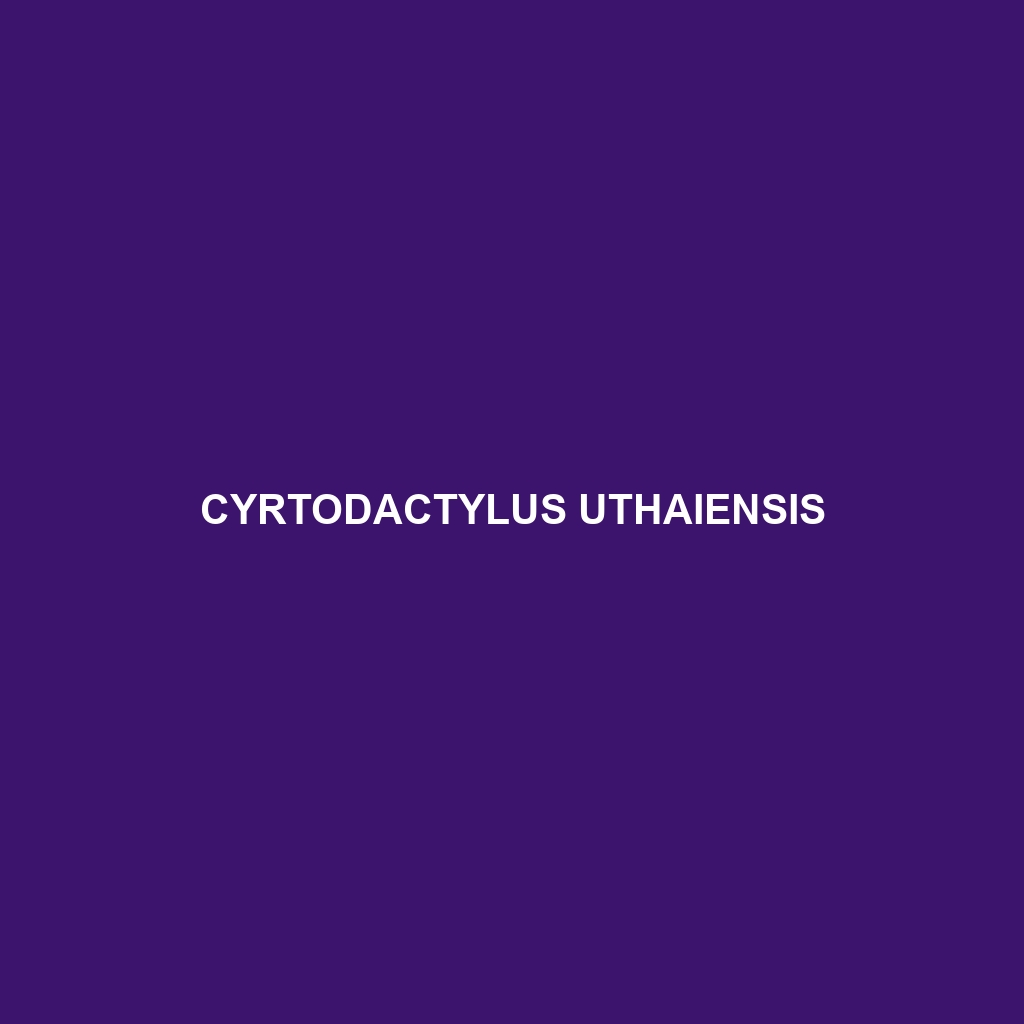Cyrtodactylus uthaiensis: A Comprehensive Species Description
Common Name: Cyrtodactylus uthaiensis
Scientific Name: Cyrtodactylus uthaiensis
Habitat
Cyrtodactylus uthaiensis, commonly known as the Uthai curved-toed gecko, is primarily found in the tropical forests of Thailand. This species prefers humid, dense woodlands and is often spotted in rocky areas with plenty of crevices that provide shelter. Additionally, Uthai curved-toed geckos thrive in secondary growth forests and are resilient to certain levels of habitat disturbance, though they are less commonly seen in urban environments.
Physical Characteristics
This gecko species typically measures between 10 to 15 cm in length. It exhibits a distinct coloration that ranges from light brown to dark brown, often featuring banded patterns which aid in camouflage against tree bark and rocky surfaces. Cyrtodactylus uthaiensis has a flat body shape and elongated limbs, contributing to its agility in climbing. Its large, bulging eyes facilitate excellent night vision, making it primarily nocturnal.
Behavior
Cyrtodactylus uthaiensis is known for its unique behavior of wall climbing and its ability to navigate through rocky terrains. These geckos are generally solitary and territorial, especially males, which may be observed engaging in displays to ward off intruders. During the night, they become active for foraging and socializing, often emitting low vocalizations.
Diet
The diet of Cyrtodactylus uthaiensis primarily consists of small insects, including crickets, moths, and beetles. This insectivorous diet allows them to thrive in their natural habitat, where they utilize their excellent climbing abilities to hunt for food. They exhibit ambush feeding techniques, waiting motionless for their prey to pass by before striking.
Reproduction
Cyrtodactylus uthaiensis typically breeds during the rainy season, which offers optimal conditions for the survival of their eggs. Females lay 1-2 eggs per clutch, often hidden in leaf litter or crevices to protect them from predators. The incubation period lasts about 60 days, after which the hatchlings emerge, fully independent and capable of foraging on their own.
Conservation Status
As per the latest assessments, Cyrtodactylus uthaiensis is classified as vulnerable due to habitat destruction and degradation caused by deforestation and urbanization. Conservation efforts are essential to maintain their natural habitats and protect their populations in the wild.
Interesting Facts
One fascinating aspect of the Uthai curved-toed gecko is its remarkable ability to regenerate its tail if lost, a feature that helps them escape predators. This gecko is also known for its unique color variations, which can vary significantly even within a single population.
Role in Ecosystem
Cyrtodactylus uthaiensis plays a crucial role in its ecosystem as a natural pest control agent. By feeding on insects, they help to maintain balance within their food web. Additionally, as prey for various predators, they contribute to the overall biodiversity of their habitat, fostering a sustainable ecosystem.
